Week 57 - Monemvasia and we spring a leak
Adventures in Greece cruising the Mediterranean on our boat Matilda. It’s windlass repairs in Porto Heli, we spring a leak and finally end…

Adventures in Greece cruising the Mediterranean on our boat Matilda. It’s windlass repairs in Porto Heli, we spring a leak and finally end up somewhere new — Monemvasia!
“…and then, something broke.” If I ever get around to putting this all together as a book (which a few people have suggested now), this will probably be the title of it. Spoiler alert— the first half of this weeks’ post is all boat repair, the second half all tourist stuff.
We left off last week having returned to Porto Heli because the windlass jammed and broke again, and we were waiting to order a replacement part. Deliveries to Porto Heli come via the evening ferry, so if you are organised you get an order in during the morning, the part arrives from Athens that evening and you can fit it the next day. Given we were ordering a major replacement part, the marine store spent some time consulting with the windlass manufacturer to make sure we had it correct, which meant the order wasn’t in until Tuesday and installation Wednesday.
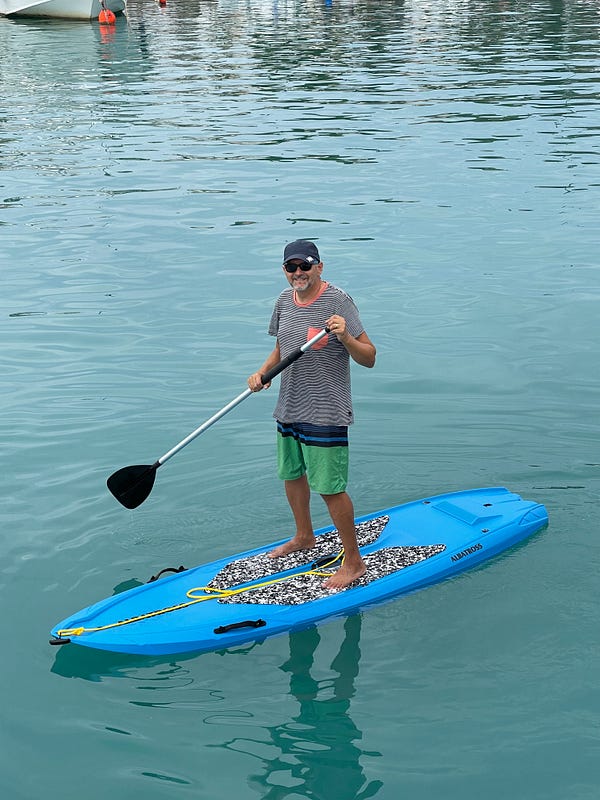

That’s OK, we found a few other upgrades to tackle at the same time! Another major issue with the windlass is the fuse placement — to replace the fuse required going into the bow of the boat, upside down and underneath the guest bed. Even in good conditions, it takes 10–15 minutes to replace. We decided to get the electricians in to move the fuse up into the anchor locker and replace it with a circuit breaker/trip switch so now if it blows, it takes 30 seconds to access and reset.
In the process, the windlass manufacturer advised that the previous fuse was actually rated too high — it’s possible that this might have been contributing to the issues as it wouldn’t blow fast enough to protect the windlass from a jam.
While the electricians were there, we also had them look at the chain counter which wasn’t working — they said they had time to replace it and move it up to the fly bridge (instead of being in the cabin where we can’t see it) and now we also have a working chain counter! Knowing how much chain you have out is an important part of anchoring and to date, it’s meant running forward to the anchor, looking for little coloured plastic markers every five meters and consulting a chart in French. Being able to glance down at a control as you’re deploying the anchor from the fly bridge and knowing there is 36.7 meters out is a game changer.
If you are ever in Porto Heli/Ermioni and need some electrical work, I highly recommend Kottaras Marine — not only did they fix everything quickly and for a fair price, they came out of the anchor locker with a bag of old wiring which they’d redone while they were there as it was “a mess” and also corroding away. We’re feeling great about the windlass now and having used it for a few days, I think those problems are behind us.

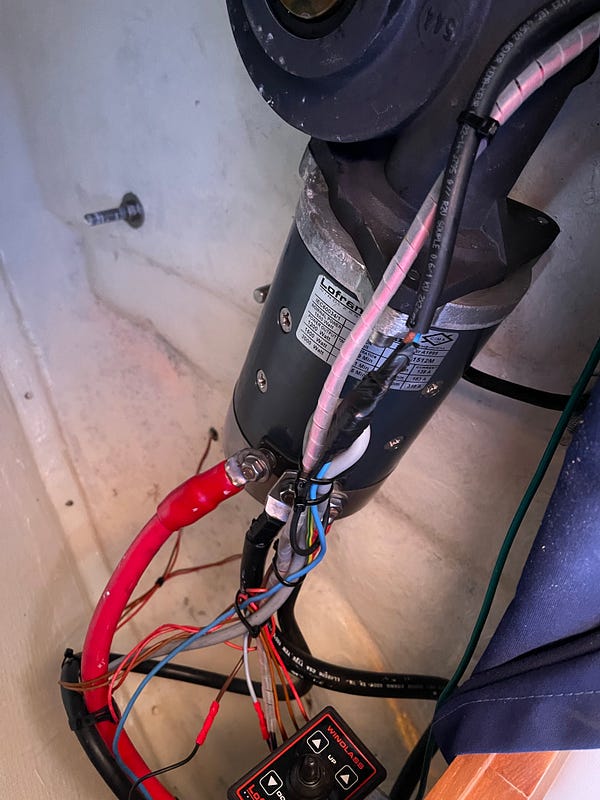
So far this is smooth enough, the windlass was in and working by Wednesday which although frustrating that we were still sitting in Porto Heli, was really about as good as you could expect for a significant piece of work. The chain counter didn’t start until Wednesday and then was finished Thursday, which was worth the 24 hours to have it functioning and turns out didn’t really delay anything because as we’re getting excited about leaving… something broke…
Wednesday afternoon we were in the middle of the windlass installation and waiting on the electricians, but we felt confident that we’d be able to leave, if not Wednesday afternoon, then definitely on Thursday morning, so we started to prep the boat for a larger journey. One of the steps involved is refilling the water tanks. After the tanks were full, we noticed that the bilge pumps kept going off. Now this is not a new issue, but it’s one that hasn’t been that frequent yet.
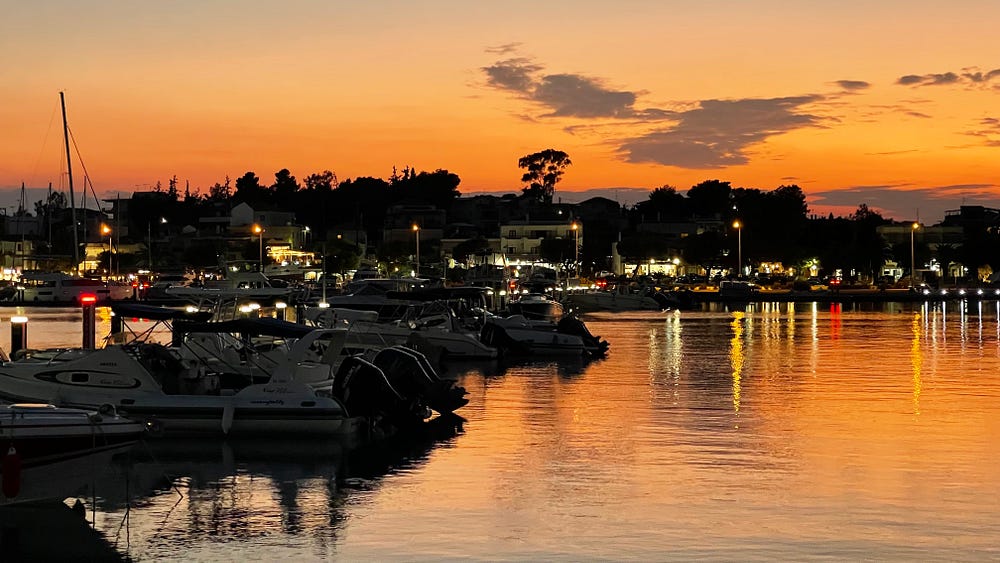

The bilge pumps come on automatically to empty water from the bilge (the bottom of the boat) and pump it over board. In theory they never go off, but in practice, they usually cycle a few times a week, just from condensation, water running in from washing the boat, spills etc. When they trigger repeatedly it means water is coming in somewhere it shouldn’t…
I started looking under the floors and there was a steady stream of water running from under our bed, which is where the freshwater tanks are. One of them had sprung a leak. Probably it’s been leaking for a while (and was most likely the cause of the infrequent bilge pump trigger) but it was now becoming severe.
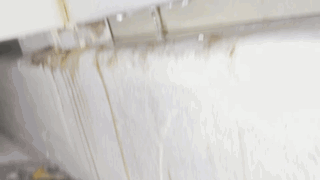
Emotionally we felt quite devastated — the last three weeks have seen our actions dictated to us by either things breaking or the weather and we were really looking forward to exploring something new, yet here was another wrinkle in the way.
After you get over the initial shock, you start to plan and work with what you have.
- Drain the tank and pull it out so we can see what might be done about the leak.
- Contact the various boat repair places we know and see what options there are (none, they can’t look at it until at least mid-November).
- OK, so we have to patch it ourselves. There’s various epoxy products on the boat just for this, but of course they are expired, but we make do and we buy more from the marine store (which now has no more left because they only hold one in stock at a time).
- Assess the repair. The leak has definitely slowed. We keep puttying, epoxying and eventually adding Gaffer/Duct Tape (because “why not”). We sleep overnight in the forward cabin while everything dries and in the morning it no longer seems to be leaking.
- Put it back, fill the tank and see — looks like it’s now mostly patched — we’re still seeping some water, but it’s not enough to stop us. It only has to last up until December when we were already planning to have the whole tank replaced anyway.
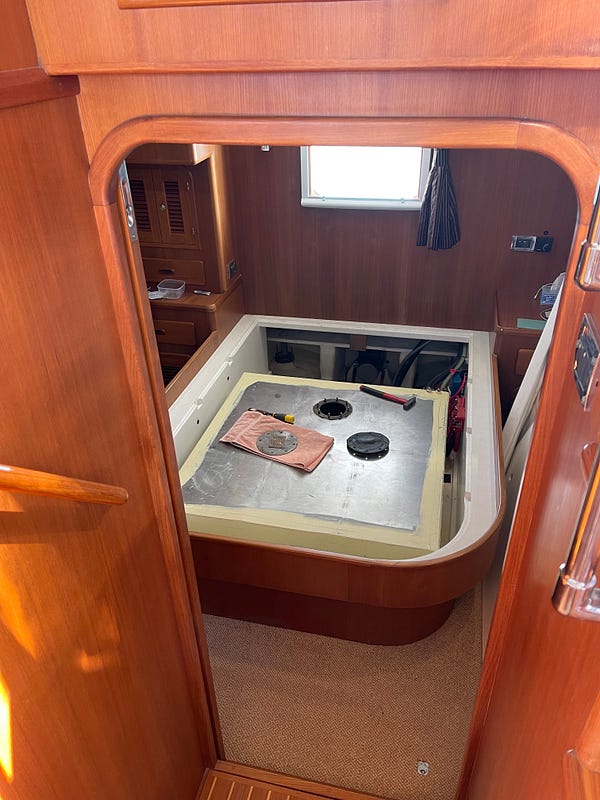
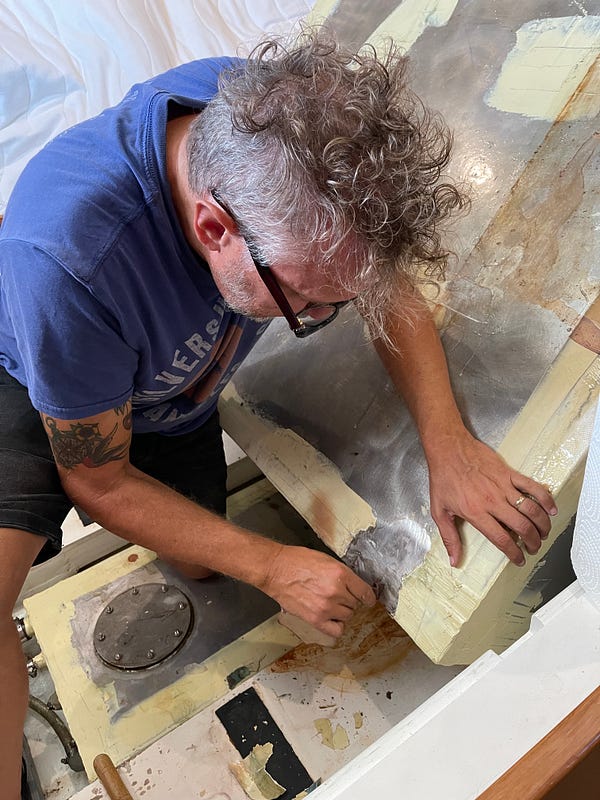
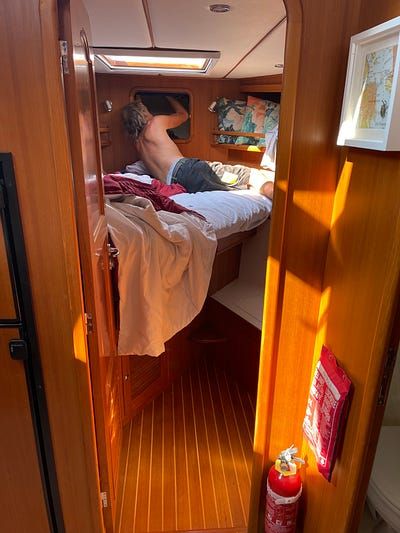
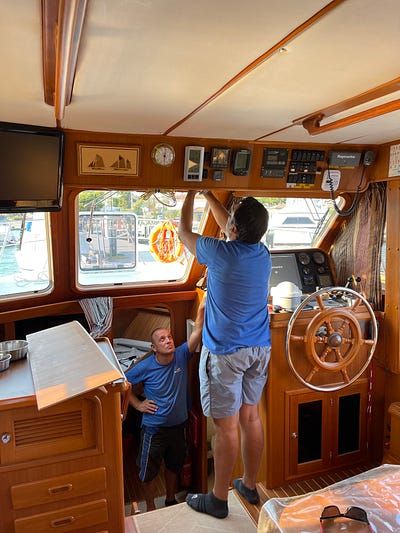
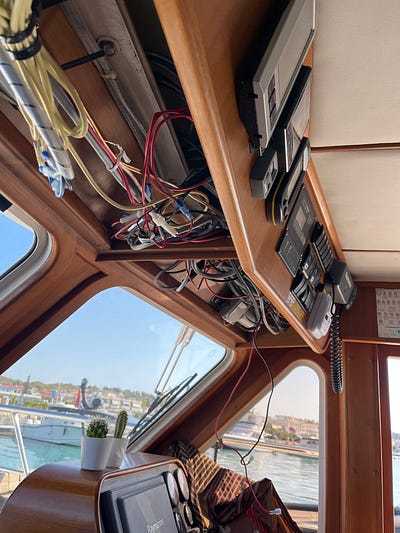
This nomadic boat life is actually making us very zen. You just have to roll with things that happen. You assess risk and make a call that the worst case scenario (which would be that there is a critical failure in the tank and it dumps all the water into the bilge) is an annoyance at most, but not worth wasting time worrying about when there are things to explore and do. For the record, were that to happen a) The bilge pumps would do their job (pump the water back out of the boat), b) there’s no risk of sinking because we’re already carrying that weight / water anyway, it’s just in tanks and c) there are actually two tanks, a big one (leaking) that drains to a smaller 150 litre one where we actually draw the water from, so in the worst case we’d still have 150 litres to work with, we’d just have to fill up more regularly. No boat is ever perfect and if we kept chasing perfection we’d have no fun at all!
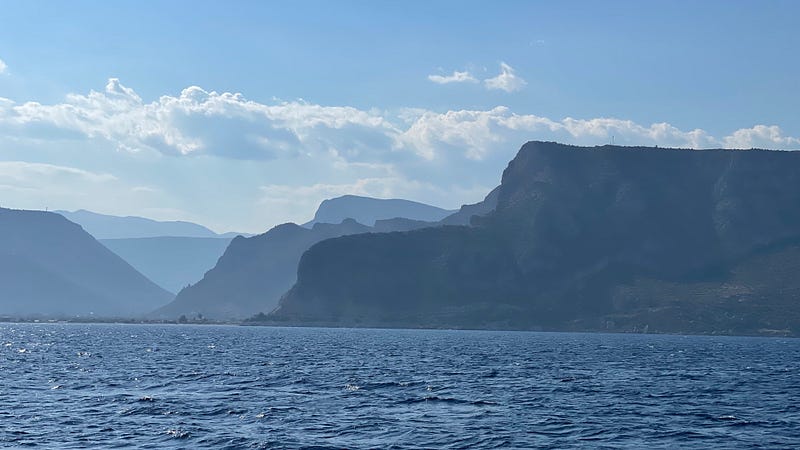
With a working windlass, new fuse setup, a new chain counter and freshly patched water tanks we were finally ready to go! Although it was now 2PM Thursday afternoon, we chose to move and make the crossing to Leonidi across the Argolic Gulf. The crossing was a little rough (not uncommon in the afternoons), but otherwise uneventful and 3 hours later we were in a new port, one that neither of us have ever been to before!
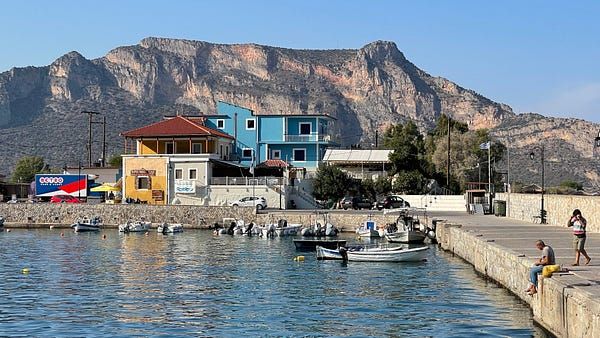
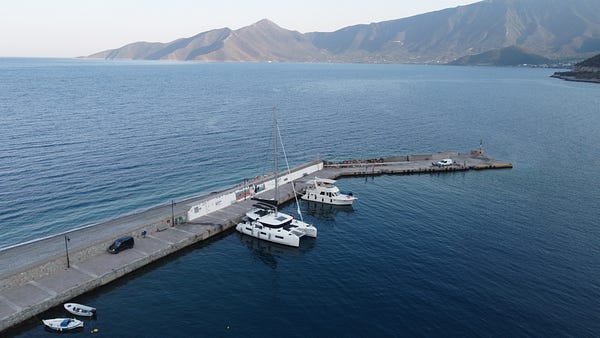
Plaka marina at Leonidio may not be the MOST amazing place in Greece, but boy did it feel like it after being stuck in Porto Heli these last two weeks.
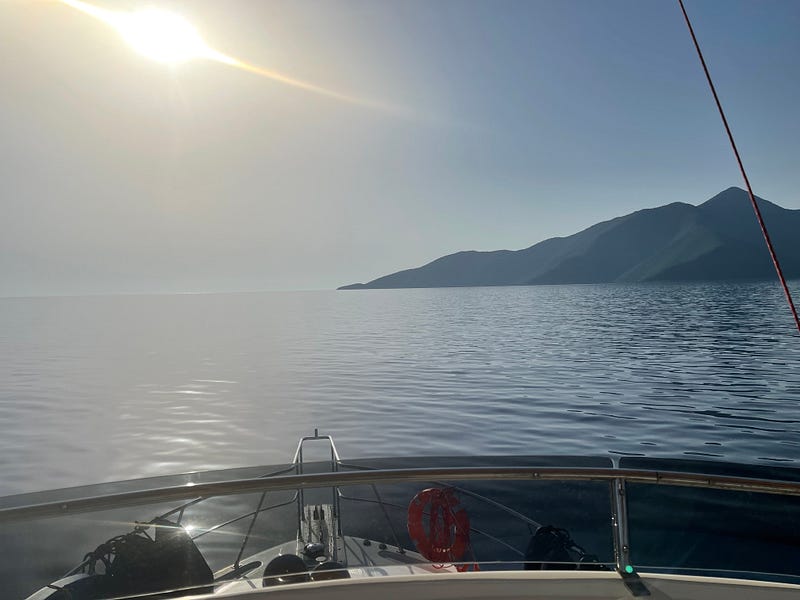
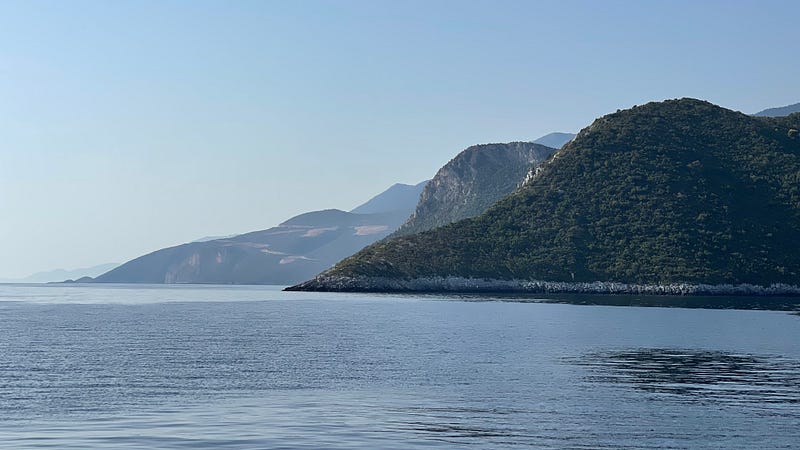
A nice night there and then we left early on Friday morning for Monemvasia, an amazing medieval fortress town in the south of the Peloponnese. It was a promontory that separated from the main land in an earthquake around 200AD and was never really inhabited by the ancient Greeks, rather the Byzantines, Venetians and Turks seemed to trade the fortress back and forth for a while — as a result of repatriations as it was never captured in battle.
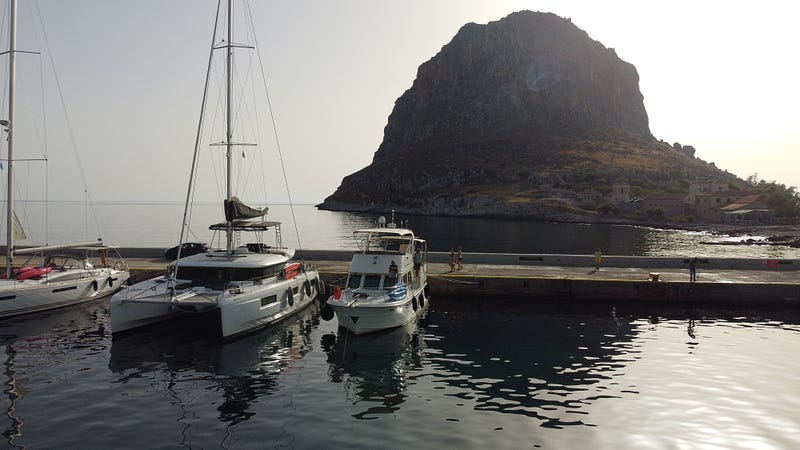
It’s unique because it remains untouched in terms of the original street plan, and there has been a lot of effort to keep it feeling “authentic”. The only way around inside the town is by walking, there are no mopeds or cars allowed — not in an “artificial way” like Hydra, but literally because they wouldn’t fit!
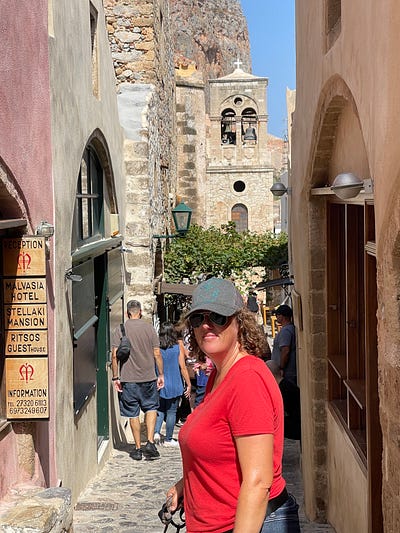
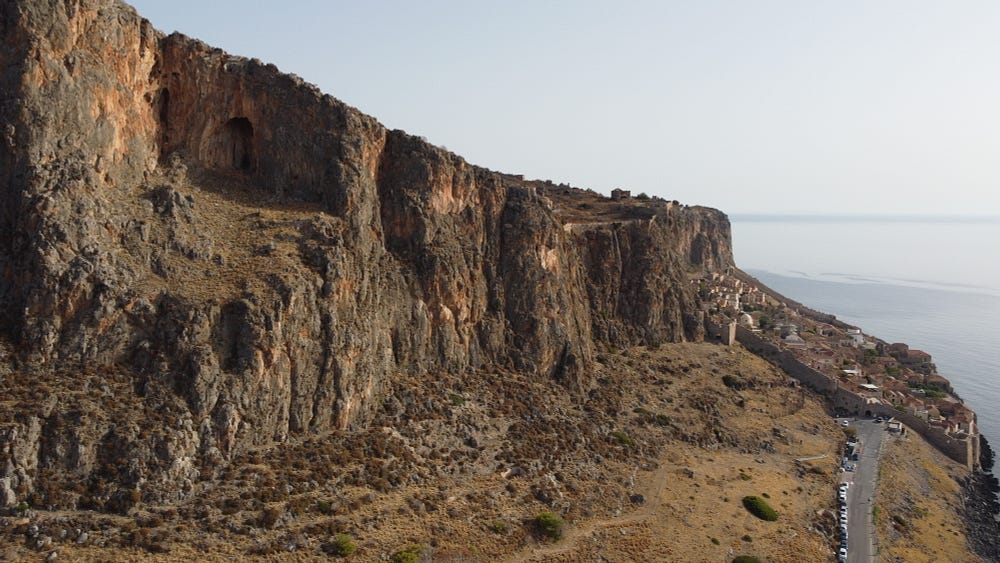
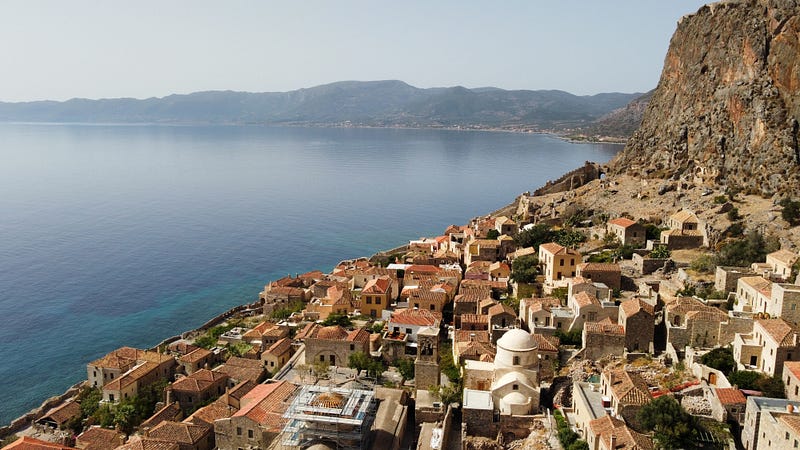
It has a population (according to a guide we over heard) of only about 20 permanent residents left, pretty much everybody else now lives on the main land and commutes for work. Most places being converted to either restaurants or hotels. There’s easily 1,500 tourists staying there a night, but no supermarkets or any of the normal trappings of life.
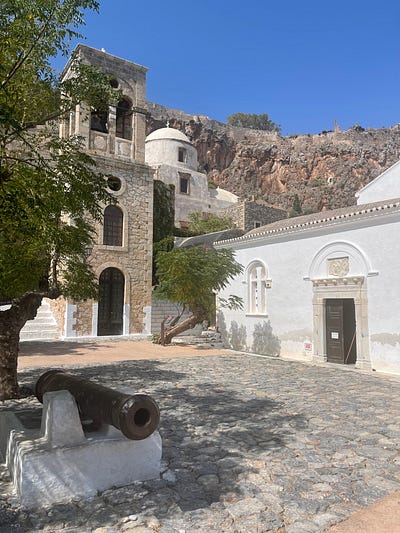
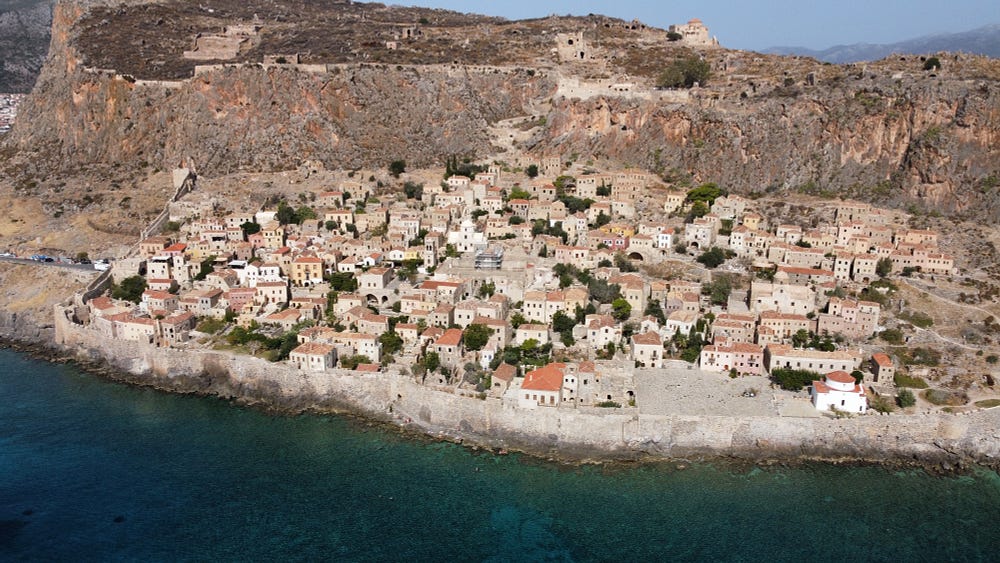
A steep walk up the hill and a switch back path shows you why it was so well defended with the castle on top of the soaring rock cliffs. Up top, they could sustain 30 people indefinitely with small farms and so never fell to siege.
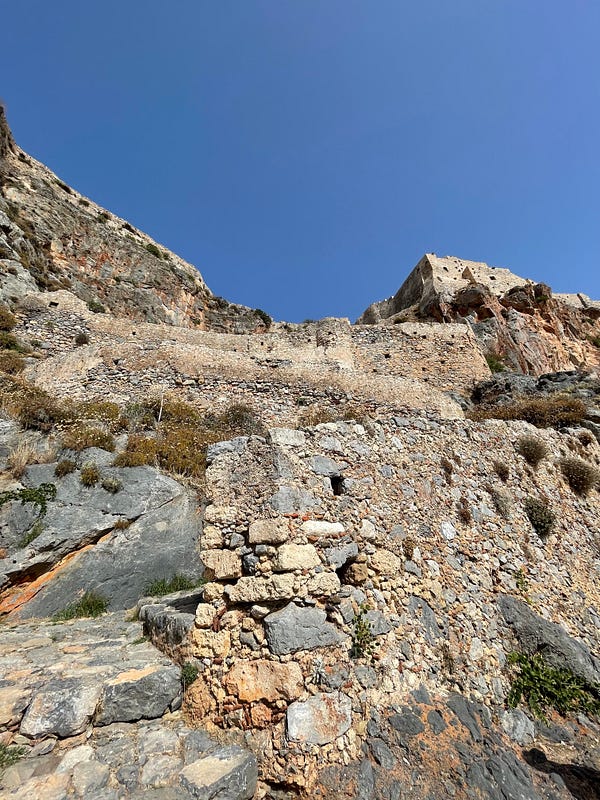
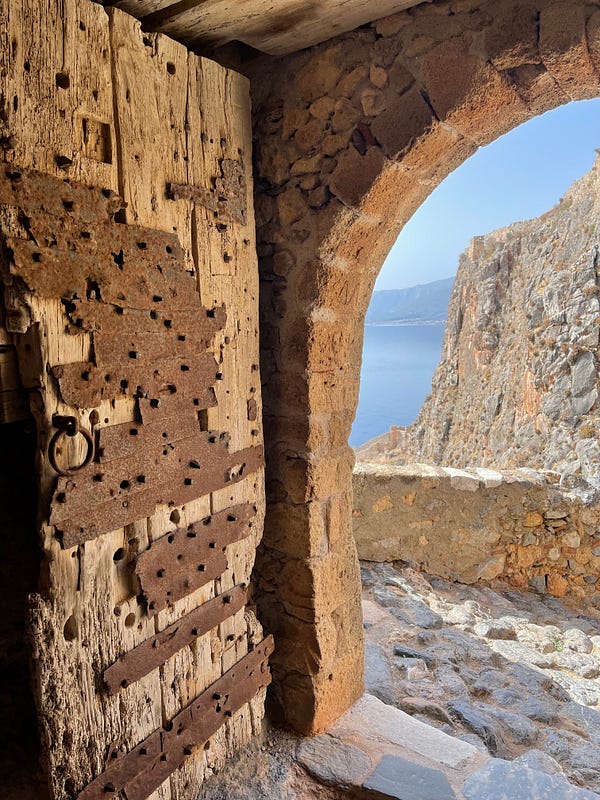
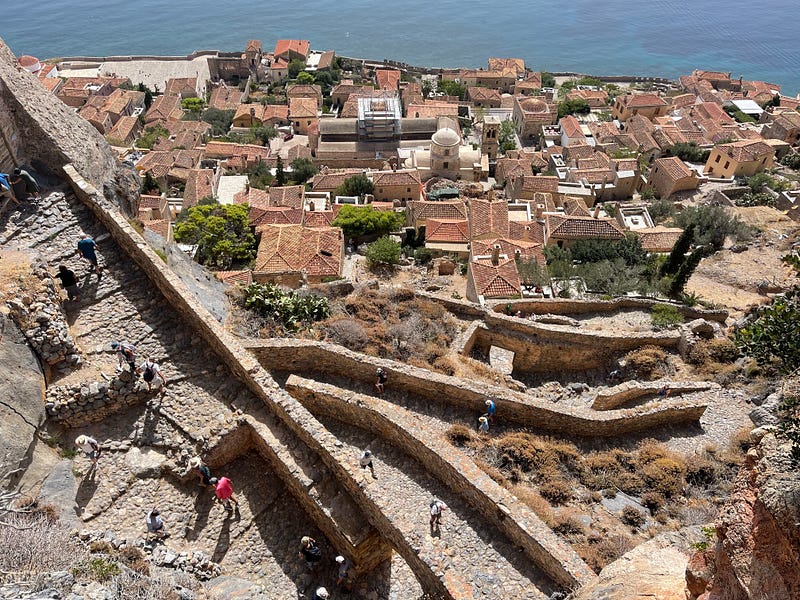
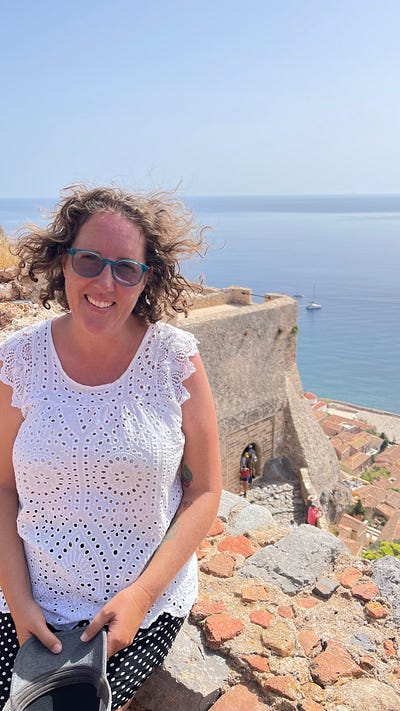
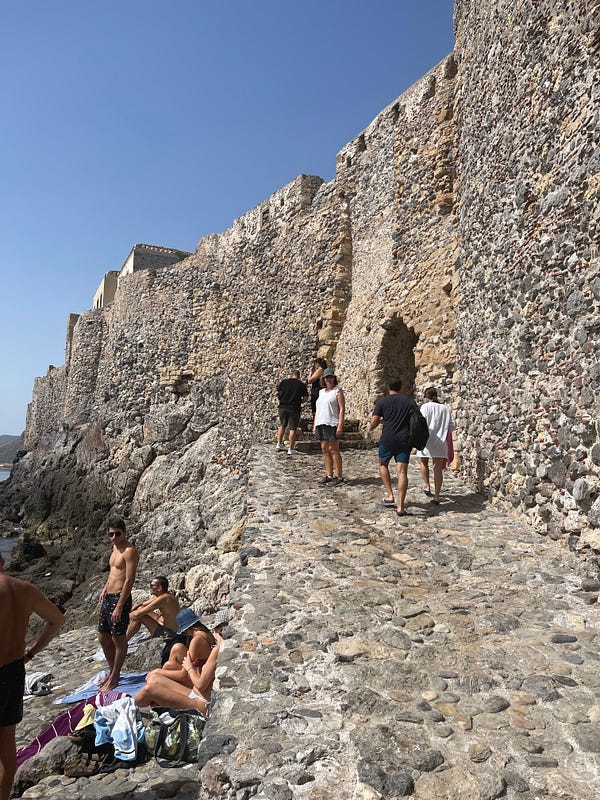

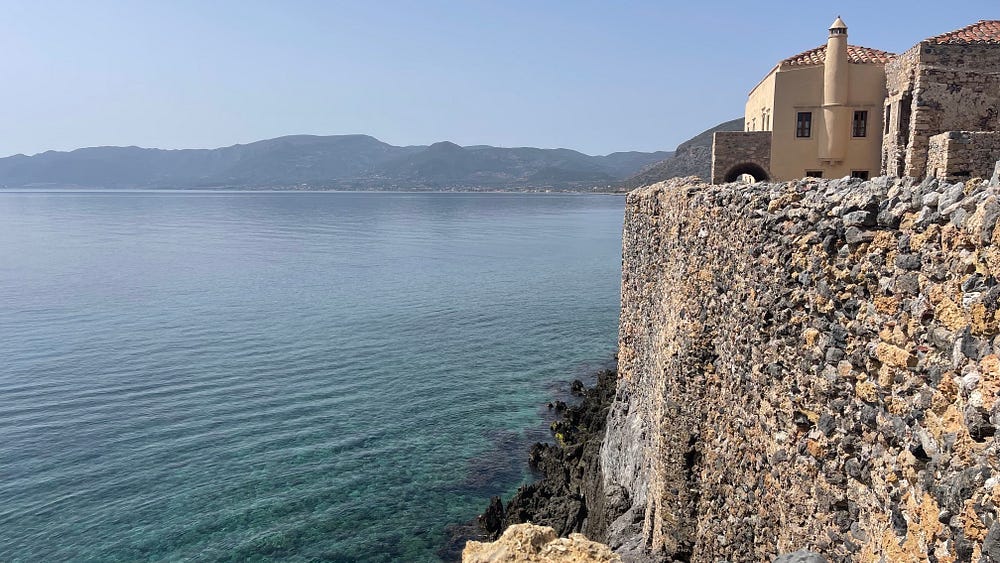

The mainland town was also very quaint, with a marina that had sea turtles swimming inside the protected walls.
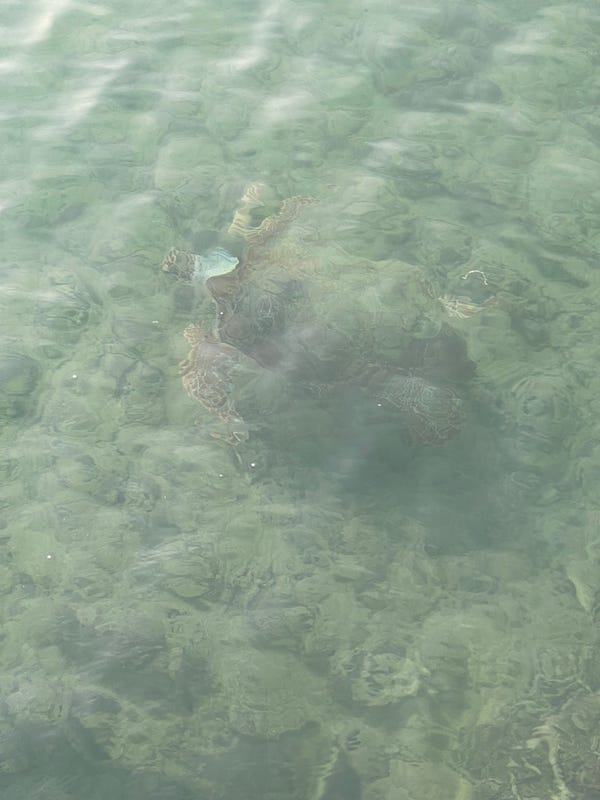
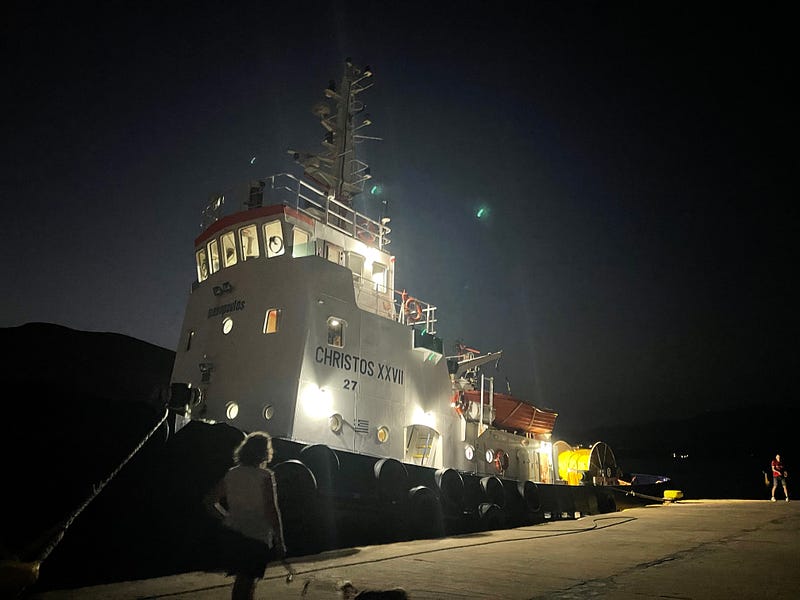
When we returned to the boat from Monemvasia on Saturday afternoon, the winds had picked up coming down off the main land (due to the high temperature) and the boat was starting to move as we hadn’t put out quite enough anchor the day before. We debated reseting the anchor, but decided we’d rather move somewhere that was a little less windy and where we could go swimming. The move to Gerakas was a great success.
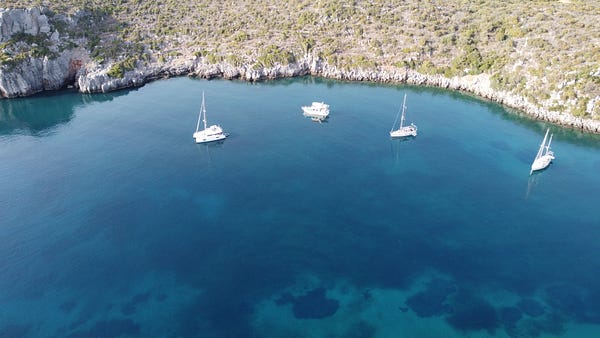
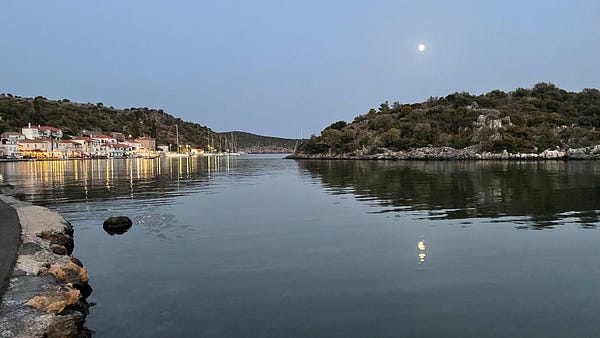
There was no internet, and apart from a bit of wind in the late afternoon, we were well sheltered overnight in what’s probably the closest to a fjord we’ve yet to see here in Greece. It was the peaceful, relaxing break we didn’t know we needed. Instead of tying up to the dock, we decided to just anchor out (for the first time since our very first night actually), and it was great just dropping the hook and done. No swimming to shore to tie stern to, no tossing ropes to someone on a dock.
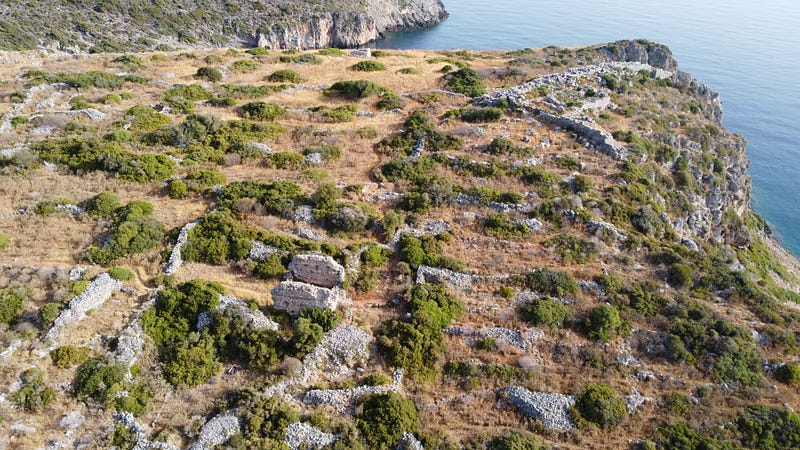
The boat next to us was German, and they spent the majority of their time aboard in the nude. As Karina’s mentioned previously, it’s something you quickly get used to, but it’s still funny to us as this couple really had little modesty — including the man standing on the end of the boat holding a conversation with us, or yelling at another boat completely full frontal. As Karina said, “well, he definitely doesn’t have any tan lines”.
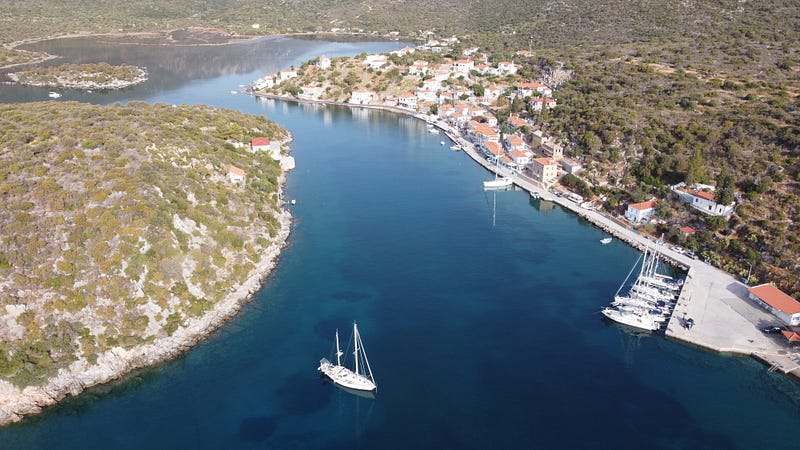
Gerakas is a very authentic feeling Greek village — in the sense that it’s not really catering to tourists, it’s just “what it is”. A quite, sleepy little town with no mobile reception, but lovely clear water, a short hike to some old ruins (Zerakas, yeah we’d never heard of them either, but they date back to 1400AD and are largely unexplored / unexcavated from what we can tell) and a sea cave you can visit in your dinghy.
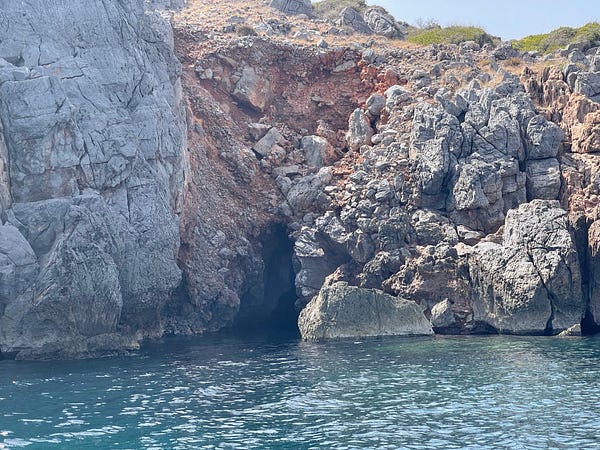
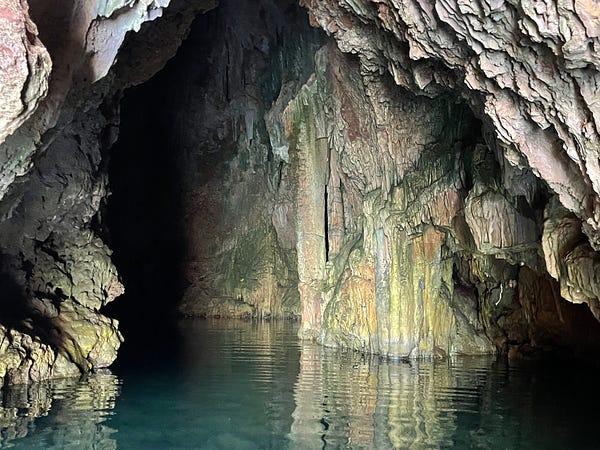
We used the paddle board, including letting the dog have a go, we enjoyed the water and we toured the sites. All rather pleasant. At about two in the afternoon on Sunday the winds were picking up again and we decided to continue heading back north, so we cruised for a couple of hours and now we’re in Kyparissi, another small town, but one with mobile reception and therefore internet this time!
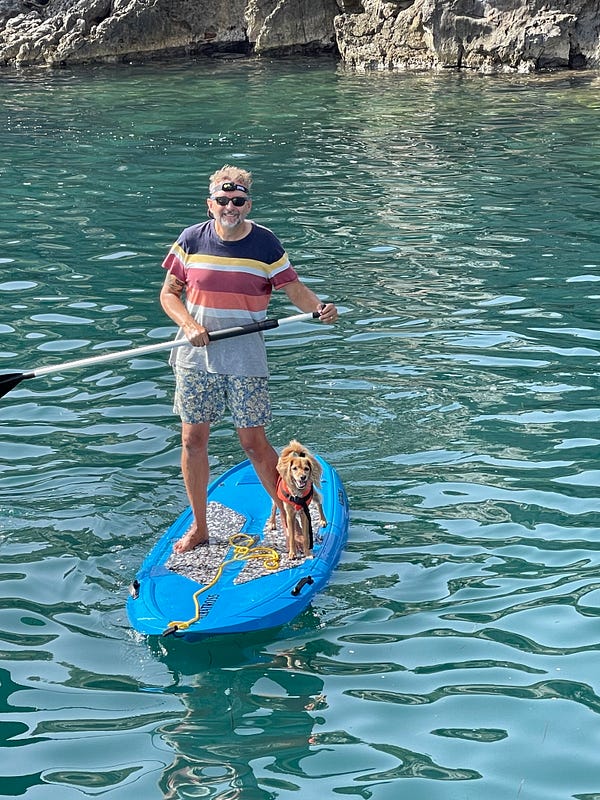
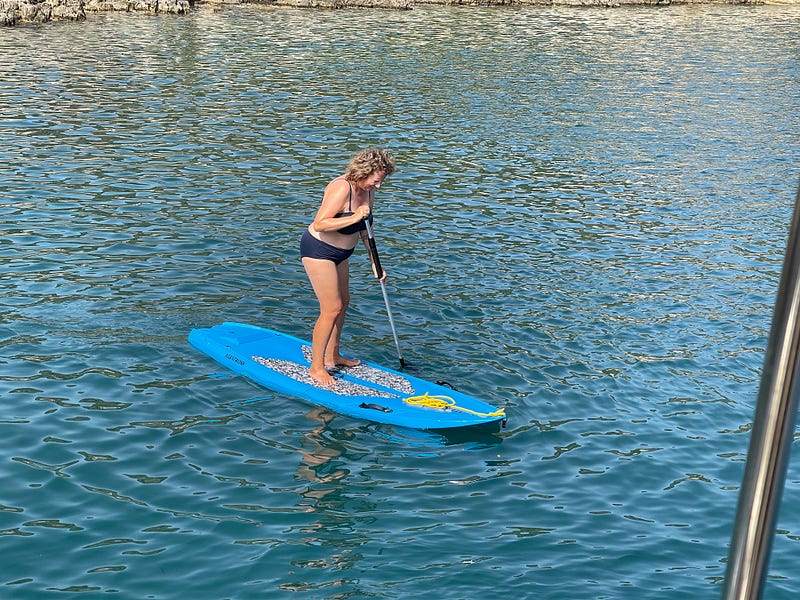
And guess what? The windlass is working reliably, the chain counter is fantastic and an absolute godsend. We’ve not needed to use the fuse, but it’s now in a great place if we have to and the freshwater tank, while leaking a tiny amount, isn’t triggering the bilge pump that we’ve noticed yet. Life is great and we’re having a wonderful time. And if something else breaks (because it will), that’s cool — it’s all part of the big adventure!
This week we are slowly cruising back towards Athens and planning on where to leave our boat for a few days to catch a ferry so we can go to a birthday party, run a few errands and update our captains licenses (funny story, due to Covid and shipping problems, Greece has run out of the plastic that you print licenses on, so we can’t get our permanent ones yet and now have to go back to Glyfada every 2 months to renew the paper version of them…).
Want to see where we are now? Check us out on NoForeignLand https://www.noforeignland.com/boat/matilda
Until next time,
Tim & Karina
